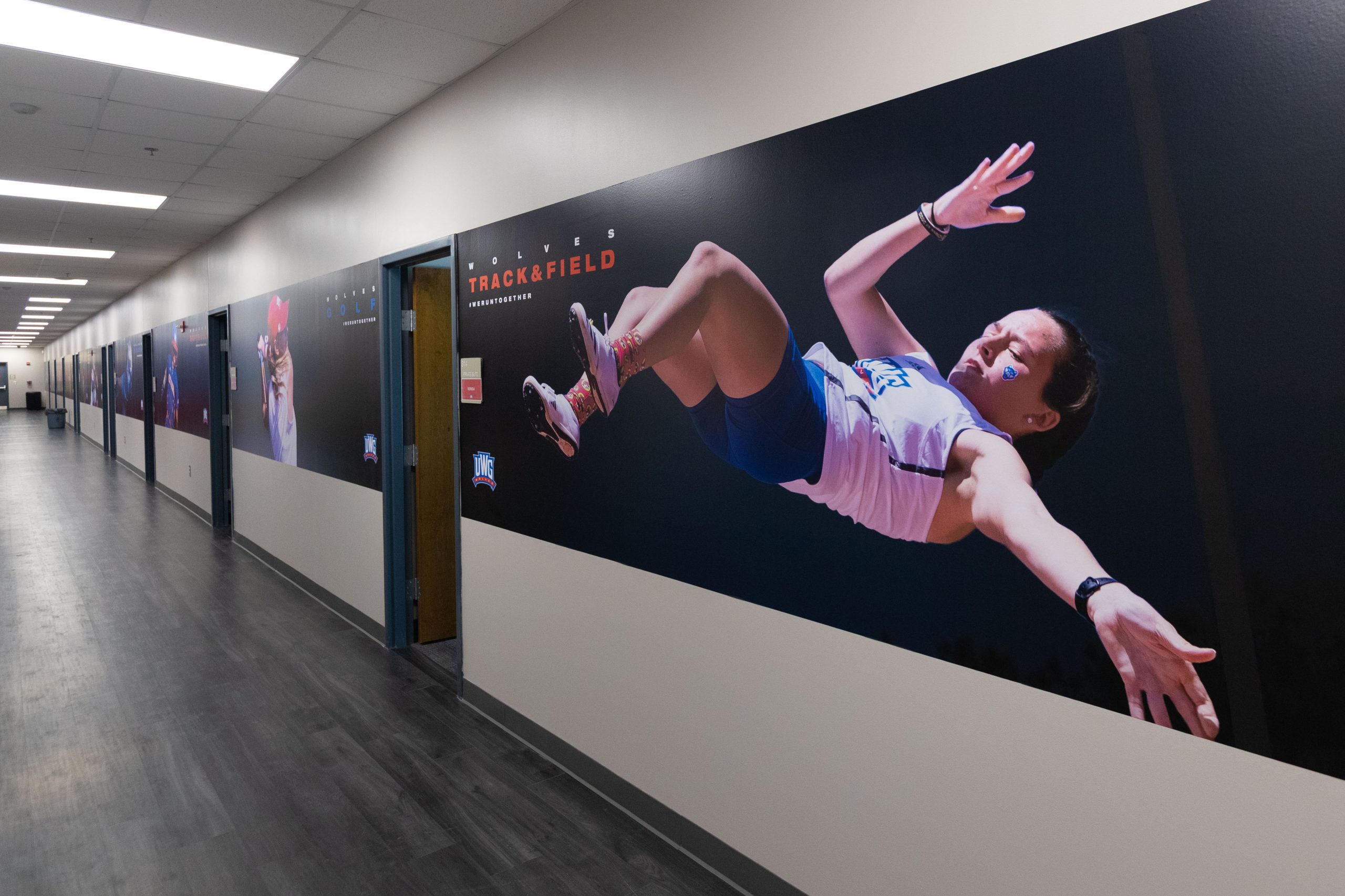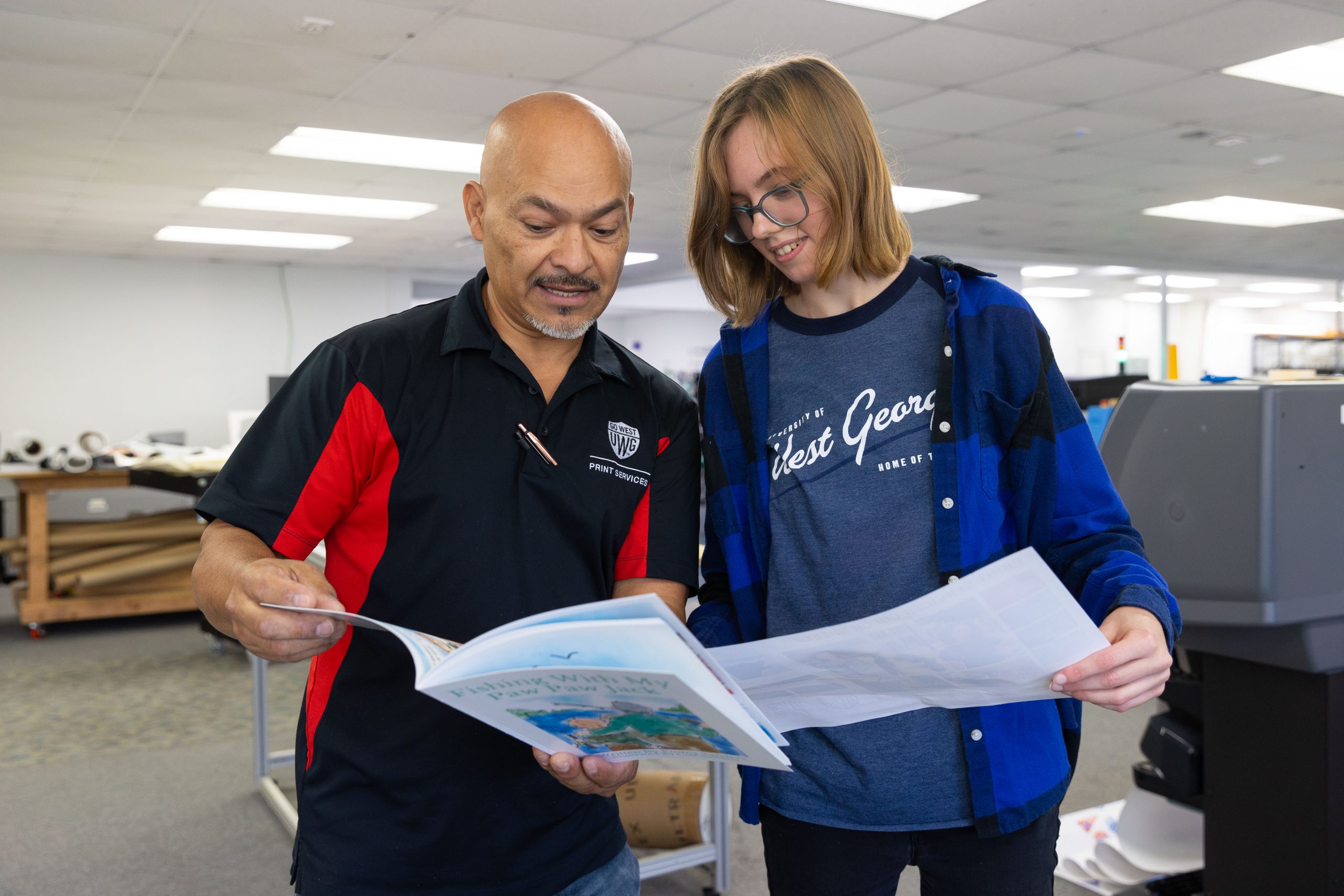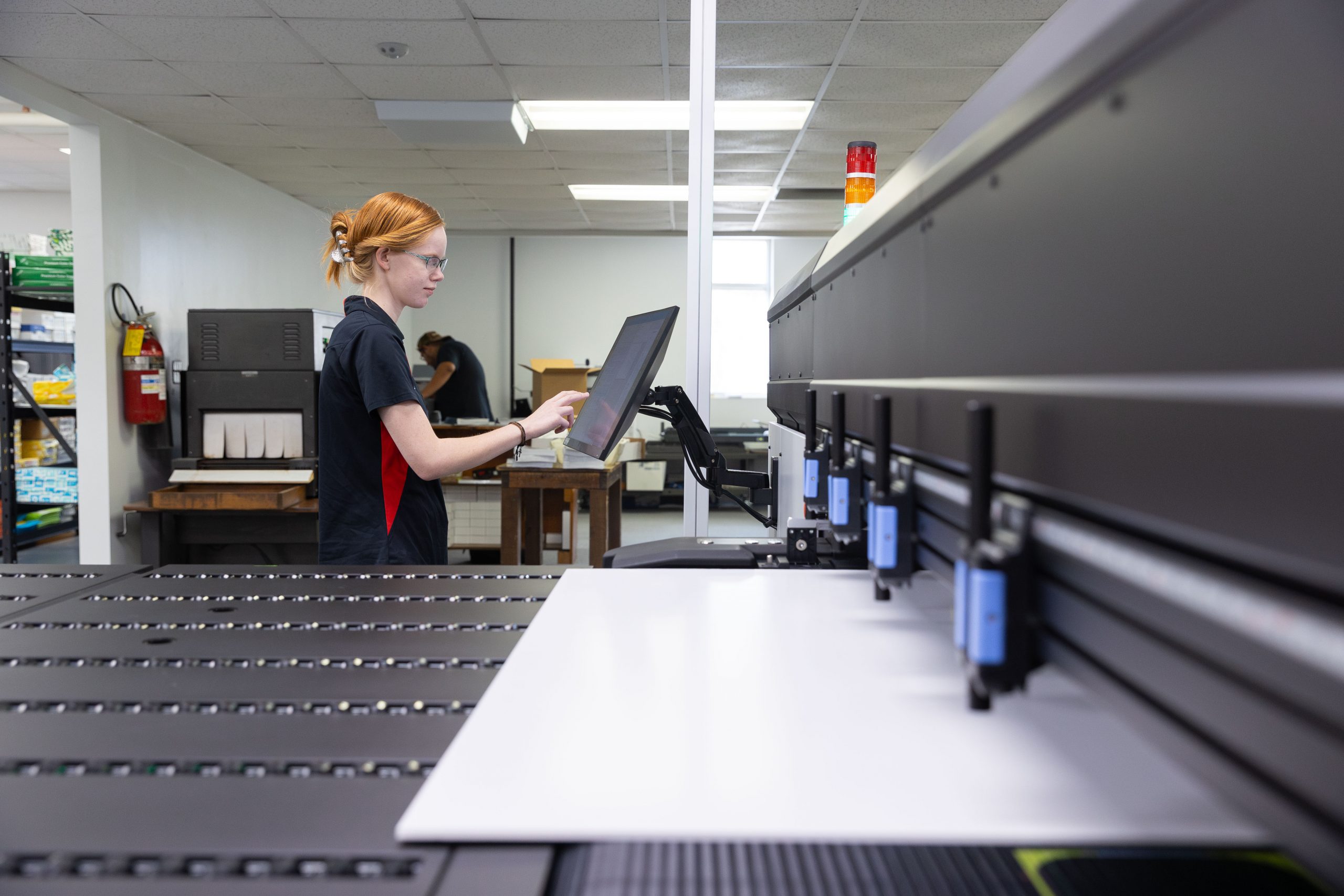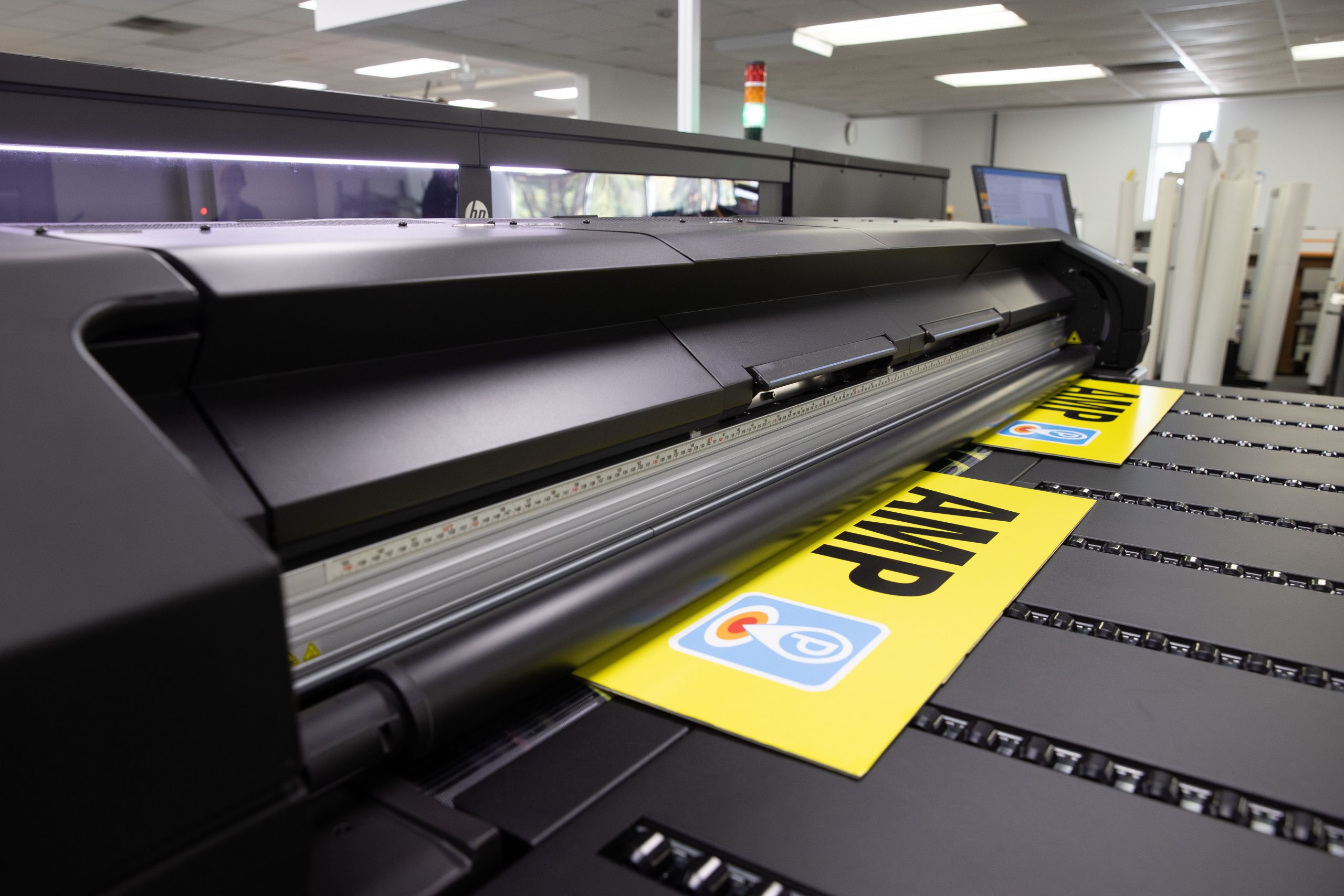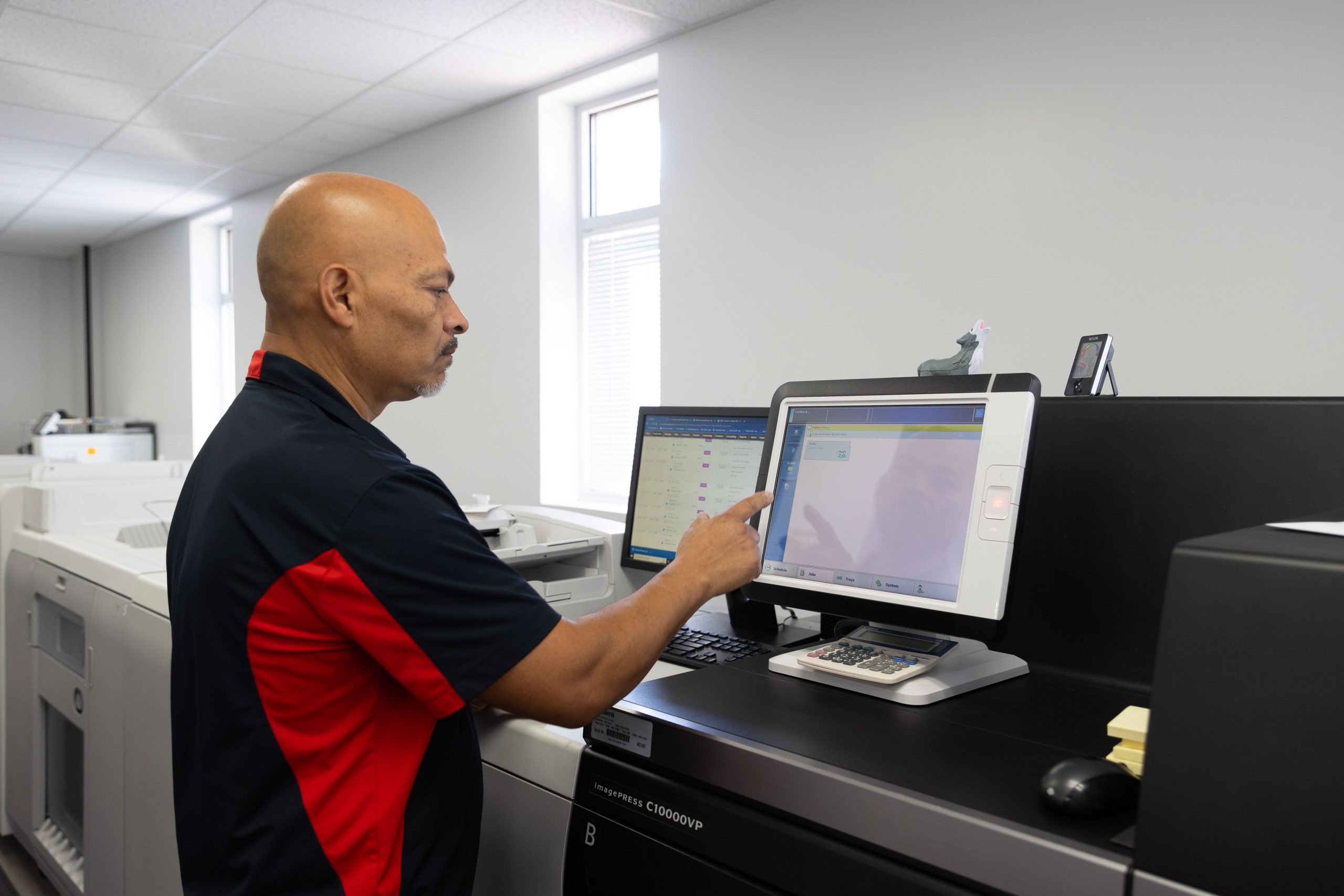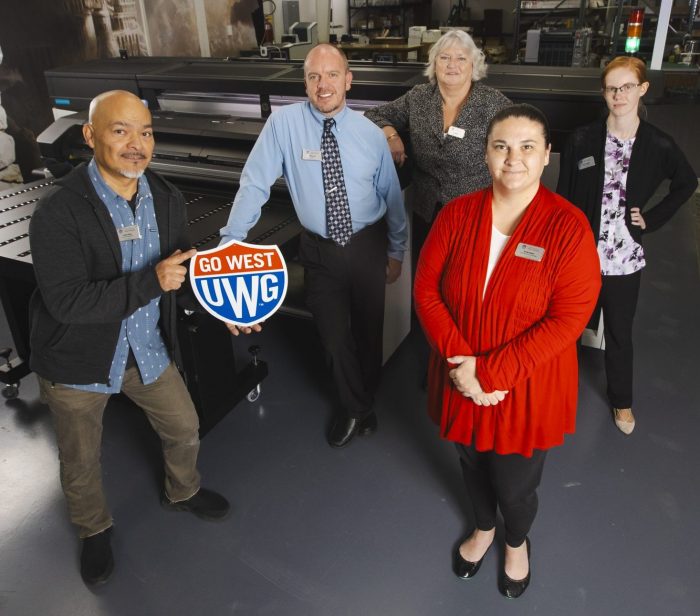Setting the Standard for Quality, Speed, and Customer Satisfaction
University of West Georgia
By: Bob Neubauer
University of West Georgia Print & Mail Services has transformed itself into a thriving printing hub, boasting impressive growth, strong partnerships, and a commitment to high-quality, fast-turnaround service.
Michael Post is determined to make University of West Georgia Print & Mail Services a world-class printing operation. At the helm of the seven-employee in-plant for four years now, Post came from the commercial printing world and has tried to incorporate what he learned there. He runs the Carrollton, Georgia, operation as a business focused on high quality, fast turnaround, and customer care.
And it’s been working. Customers are impressed and have been turning away from outside print providers because of the in-plant’s flexibility, speed, and tendency to say “yes” to difficult demands. Over the past two fiscal cycles since COVID, the in-plant has been averaging almost 15% growth says Post, director of UWG Print & Mail Services.
“We’ve really got some good, strong partnerships now across campus,” he reports.
A 100% self-funded auxiliary, the in-plant is on track to generate $722,000 by the end of its fiscal year next June 30, he says.
“We know we’re on our own, and we’ve got to fight to keep customers — to earn customers,” he says.
The in-plant never shies away from “ridiculous requests” for fast turnaround, he declares. It has been able to bring Admissions work back in-house by prioritizing its work and meeting its quick turnaround needs. Even if a customer needed two-hour turnaround, Post insists, “we’re going to do everything we can to make it happen.”
Quality and Consistency
Speed isn’t everything, though; the in-plant also focuses on providing top-notch quality. It even went so far as to become an Idealliance G7 Master Facility and calibrates each of its digital production presses so their output matches, keeping UWG brand colors consistent.
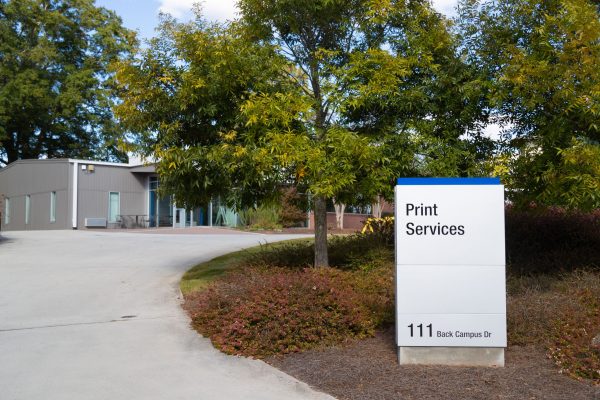
“We pride ourselves on consistency with color and quality,” he emphasizes.
That quality got a boost in 2020 when the in-plant upgraded its digital equipment. The shop added a Canon imagePRESS C10000VP with a Plockmatic bookletmaker and three-side trimming; a Canon imagePRESS C810 as a backup; and a Canon varioPRINT 115 black-and-white digital press to produce course packs. All three have in‑line saddle-stitching.
“The 10000 is our workhorse,” Post declares.
“Probably more than 80% of our production happens there.”
He loves having the ability to add consumables and toner while the press is running. It’s used to print a variety of items: postcards, booklets, magazines, rack cards, recruitment and commencement materials, admission letters, and more. Many of these pieces require variable data printing. On recruitment pieces, for example, text and photos change from piece to piece based on information in each student’s application.
While used less, the imagePRESS C810 serves an important purpose.
“The 810 is mostly used for long sheets,” he says — tri-fold brochures, programs, landscape-format books, long pocket folders for Undergraduate Admissions. “There’s just a lot of call for it. Long sheets are very popular.”
Though course packs are on the decline, the in-plant has found a niche for them that has made its varioPRINT 115 very useful: If a professor assigns a digital book, students can purchase a printed version from the in-plant.
“It’s very popular. We wouldn’t have believed it before,” Post says. “It’s a nice little bump to the bottom line.”
Post loves the Canon PrismaSync controller the shop uses to manage and run the three presses.
“It’s really operator friendly,” he says. “We can train a student to use it in about a day, and so if my main operator is out, one of us can go back there and run it or one of our student assistants can run it.”
59 Years and Counting
Located on the east side of UWG’s campus, in a 9,393-sq.-ft. facility with its own loading dock, UWG Print & Mail Services has been serving the university since 1965. Its four print and three mail employees are supplemented by a temp worker, one student assistant, and two interns, who receive first-hand, real-world experience (see sidebar).
Though he took the reins from former director Sally Roberts in April 2019, Post has worked at the university since 2011, previously managing the help desk for UWG Online. Under his watch, the in-plant retired its offset presses and upgraded its digital equipment. Those upgrades include a new HP Latex R1000 hybrid flatbed printer, installed in July. It joined an HP Latex 365 roll-fed printer.
 “We do a lot of signage here,” says Post. From yard signs to Dibond (composite aluminum) parking signs, the in-plant has been keeping its wide-format printers very busy and has partnered with the Facilities Services department to update campus signage.
“We do a lot of signage here,” says Post. From yard signs to Dibond (composite aluminum) parking signs, the in-plant has been keeping its wide-format printers very busy and has partnered with the Facilities Services department to update campus signage.
“As new buildings have been built on campus, the signage has kind of got out of whack as far as consistency,” Post points out. The in-plant will be working with Facilities to update them, saving UWG money in the process.
“We’re about 30% below the market,” he contends.
The in-plant also handles installation of campus signage and graphics. Post hired a trainer to teach staff the ins and outs of installations, and now his team is doing wall wraps, window and door signage, decals on the university fleet of vehicles, wayfinding signage, menu boards, and more. Post likes having control over installations because it allows his staff to inspect the walls, take measurements, recommend the proper material for best results, and provide quotes upfront. In short, they can ensure that the high quality of the printed materials is reflected in the quality of the installations.
To complete his wide-format operation, Post has one additional wish.
“The last piece of the puzzle for us right now is to have a flatbed contour cutter with routing and milling capabilities,” he says. He spent a lot of time at the recent PRINTING United Expo looking at cutters from Colex, Kongsberg, and Zund, and hopes to have a machine in place in early 2024.
The in-plant is also looking into direct-to-garment printing, he adds. He has talked to the bookstore about testing T-shirt designs by printing small batches in-house to see if they will sell before it buys them in bulk from an outside provider. The in-plant could do the same product testing of specialty promo items using a contour cutter, he adds.
"We care about the quality, we care about the customers, and we try to put forth our very best work every time."
—Michael Post
Bulk Mail Success
Another important service offered by the in-plant is bulk mailing. Using a Quadient DS-200i folder/inserter and a Quadient AS-650 address printer, the shop handles bulk mailing not only for UWG but for local insurance agencies, marketing firms, health systems, and even commercial printers.
“It’s actually become a pretty good revenue stream for us,” Post notes. “It’s drawing in a lot of work.”
To process mail files and handle many other shop management tasks, the in-plant uses PressWise from SmartSoft. Implemented three years ago, the SaaS-based print workflow system provides print estimating, workflow automation, imposition, print MIS, Web-to-print, shipping, and mail preparation. It handles scheduling, tracks order history, and simplifies reordering of jobs for customers. It also has extensive reporting and inventory management capabilities.
“I don’t think we would be where we are now without Presswise,” praises Post. It has brought enough automation that the in-plant has been able to keep up with its workload despite losing several employees through attrition over the years, he says.
Future Outlook
As he looks to the future, Post is assessing new services like embellishment, engraving, garment stitching, and even production inkjet. He feels one reason his team has bought into all the changes he has made in the past four years is because he has given them a say and listened.
“Letting them share their knowledge and ideas and have input has been really instrumental,” he notes. “Allowing them a voice and an opportunity to be heard really made a difference.”
His latest initiative is looking for ways to reduce waste. He and his team are analyzing sheet usage and trying to maximize coverage, while reducing clicks. They are also tracking and reporting errors in an effort to reduce them.
“Our quality’s there, our consistency’s there, and so now we’re just focusing on profitability,” he says.
Still, Post feels the in-plant’s flexibility and willingness to say “yes” to challenging customer requests are its greatest strengths. He’s glad the university community is recognizing this and rewarding the in-plant with business.
“We love what we do. We take pride in what we do,” he says — and that passion is paying off in success. “Right now, I really feel good about our operations.”






